Since the beginning of the full-scale war, many young people have found themselves in a state of loss – of home, their usual way of life, their circle of close ones, and a basic sense of safety. These challenges are felt especially acutely by young men and women who are going through a critical stage of personality development. According to Viktoriia Shevchuk, Associate Professor of the Department of Psychology and Pedagogy, it is vitally important for this group to have the opportunity to live through and reinterpret their experiences in a safe space where their feelings are acknowledged and accepted.
One of the practical tools for providing such psychological support is art therapy – a gentle and natural path to inner dialogue, helping people to access their emotions, identify accumulated tension, and release profound emotional experiences. Where words fall short in expressing pain or fear, creativity becomes a voice that helps find meaning, uncover inner resources, and feel supported through connection with others. Viktoriia Shevchuk notes that art therapy reduces anxiety and promotes emotional courage and openness. After just a few sessions, participants begin to notice that they are becoming more attentive to themselves and can recognise and accept their feelings.
Currently, a cycle of art therapy sessions is ongoing at the National University “Yuri Kondratyuk Poltava Polytechnic”, aimed at providing psychological support to students during wartime. On June 23, 2025, in Room 318 c, another art therapy session took place, where participants worked with an “emotion wheel” to become aware of their negative emotions (fear, anger, anxiety, etc.) and transform them into positive resources – for example, converting anger into determination, fear into caution, and anxiety into mindfulness. Through creative expression (drawings, collages, and symbols), students learned to regulate their emotions, discovered inner grounding, and found new meanings in a safe and supportive environment.
The session was held within the framework of the international, large-scale EU-funded Erasmus+ KA220-ADU project “TRUST” – Trauma of refugees in Europe: An approach through art therapy as a solidarity program for Ukraine war victims (Grant No. 2024-BE01-KA220-ADU-000257527).
The project title is decoded as follows:
TRUST
T – Trauma
R – Refugees
U – Ukraine
S – Solidarity
T – Therapy
The project is co-funded by the EU and led by the Centre Neuro Psychiatrique St-Martin from Belgium, in partnership with the National University “Yuri Kondratyuk Poltava Polytechnic” (Ukraine), Greek Carers Network EPIONI (Greece), Fondazione Don Luigi Di Liegro (Italy), Lekama Foundation (Luxembourg), EuroPlural Project (Portugal).
This session was moderated by:
– Olena Kryvenko, practical psychologist at Poltava Polytechnic and assistant at the Department of Psychology and Pedagogy;
– Dr. Viktoriia Shevchuk, Associate Professor at the Department of Psychology and Pedagogy;
– Vitalii Horhol, Senior Lecturer at the Department of Choreography and Dance Sports;
– Petro Horhol, Head of the Department of Choreography and Dance Sports, Honored Worker of Culture of Ukraine, Honorary Art Figure of Ukraine, Honored Dance Sports Specialist of Ukraine, Associate Professor.
A key component of the session was dance therapy – a branch of art therapy in which bodily movement becomes a means of emotional expression. Under the guidance of Vitalii and Petro Horhol, participants engaged in special exercises based on the principles of choreology – the science of movement. These practices enabled young people to express their emotions not only through visual imagery but also through movement, allowing them to explore their psychophysical state, relieve muscle tension, and experience bodily presence in the present moment. Dance, as a form of spontaneous and intuitive movement, helps restore the connection with one’s body and release accumulated emotional burdens, especially when words are insufficient.
Dance therapy, combined with other art therapy methods, creates a multidimensional space for emotional processing. Movement that doesn’t require technical skill becomes an accessible and natural form of self-expression. Participants created their own movement “phrases” in response to internal emotional impulses or images from the emotion wheel. This allowed them to live through their emotions not only intellectually or visually, but also physically – through dynamics, spatial orientation, rhythm, and intensity. Such an approach helps integrate experiences on all levels – bodily, emotional, and mental – and is particularly effective for youth who often lack the skills to verbalise complex inner states.
Another equally effective method applied during the session was the “Energy Transformer” exercise – a tool designed to help students who have experienced traumatic events during the war become aware of their emotions and transform them into positive resources. This method is based on working with an “emotion wheel” – a large colour-coded spectrum divided into segments, each representing a specific emotional state. This visual approach allows participants not only to name but also to see their emotional landscape.
Olena Kryvenko emphasises that negative emotions are not enemies, but signals pointing to unmet needs. Therefore, participants are encouraged not to avoid complicated feelings, but rather to face them to gain a deeper understanding and unlock potential for change. For example, anger often masks pain, fear reveals a need for protection, and sadness signals a need for closeness.
This process fosters emotional literacy—the ability to identify, accept, and regulate emotions. This is especially important in the context of war, where many young people live in a state of chronic anxiety. Thus, art therapy helps restore a sense of control, not over external circumstances, but over one’s internal state.
Each session concludes with a reflection circle, where participants share their insights. For some, it was the first time they had been truly heard without judgment. Others confessed that they felt relief for the first time in a long while. It is precisely this atmosphere of acceptance and trust that forms the core therapeutic power of art therapy.
In this way, “Energy Transformer” became not just an exercise, but a practice of emotional transformation – a dialogue with oneself in which a new quality of perception and resilience is born.

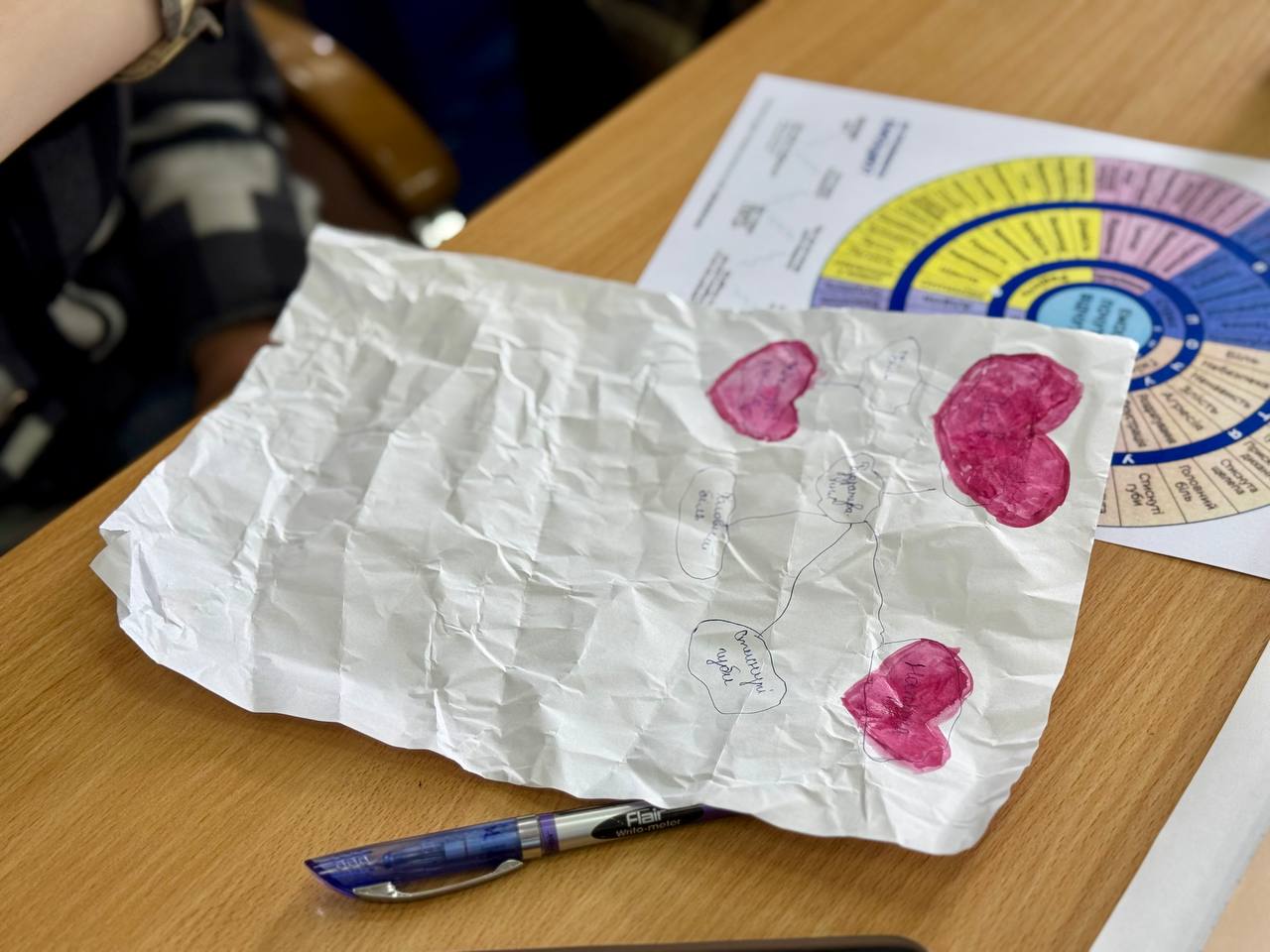

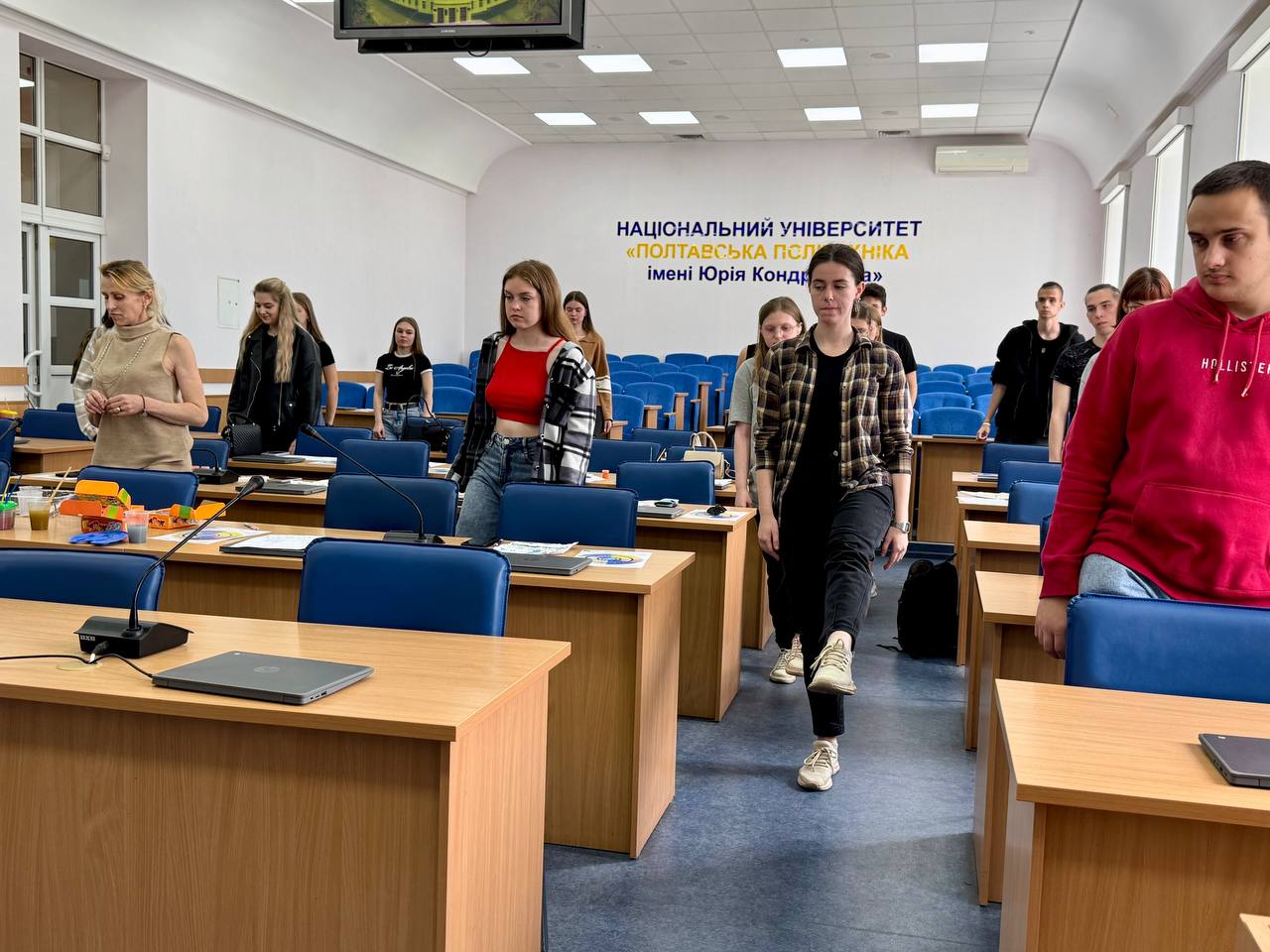
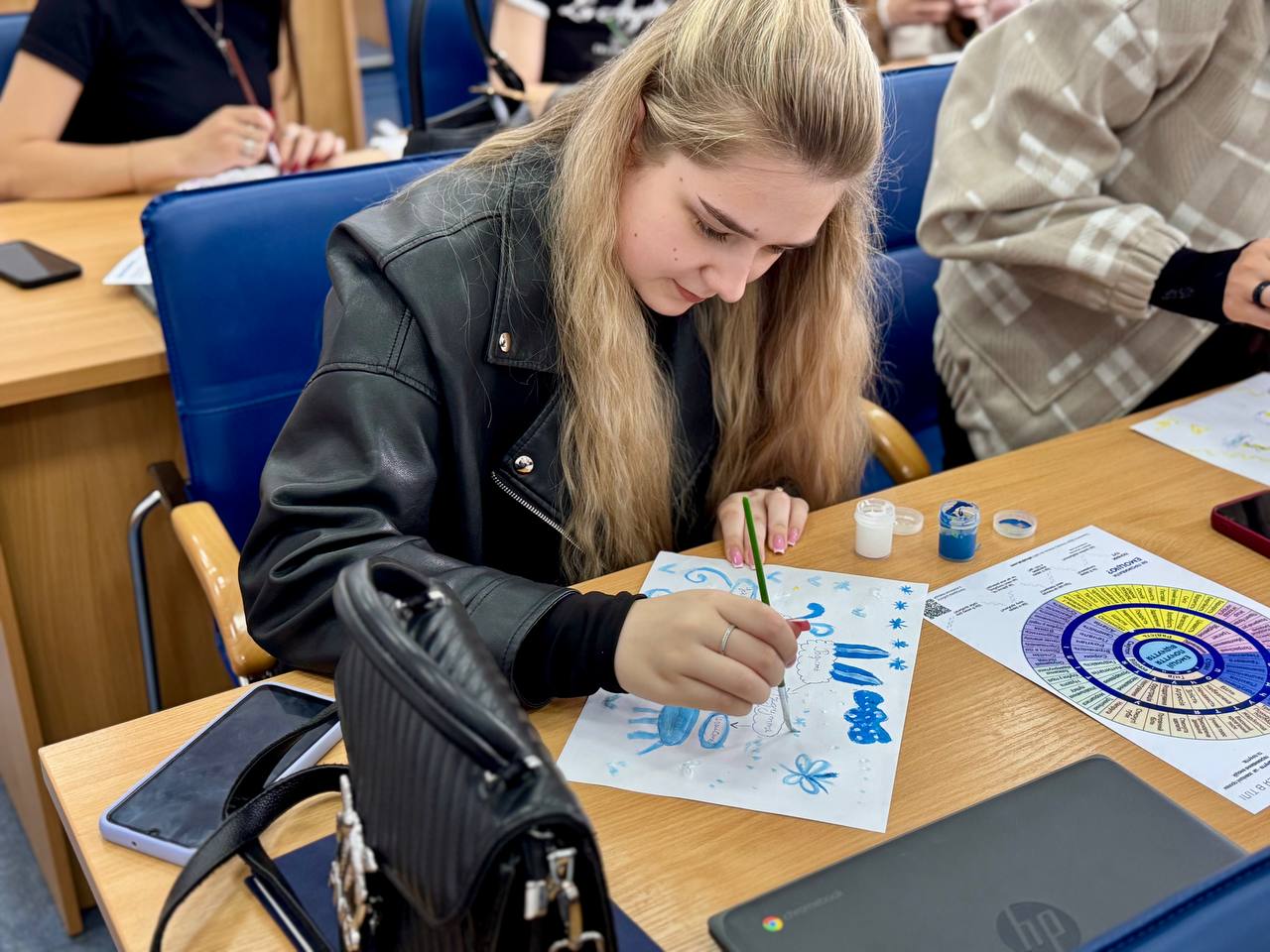
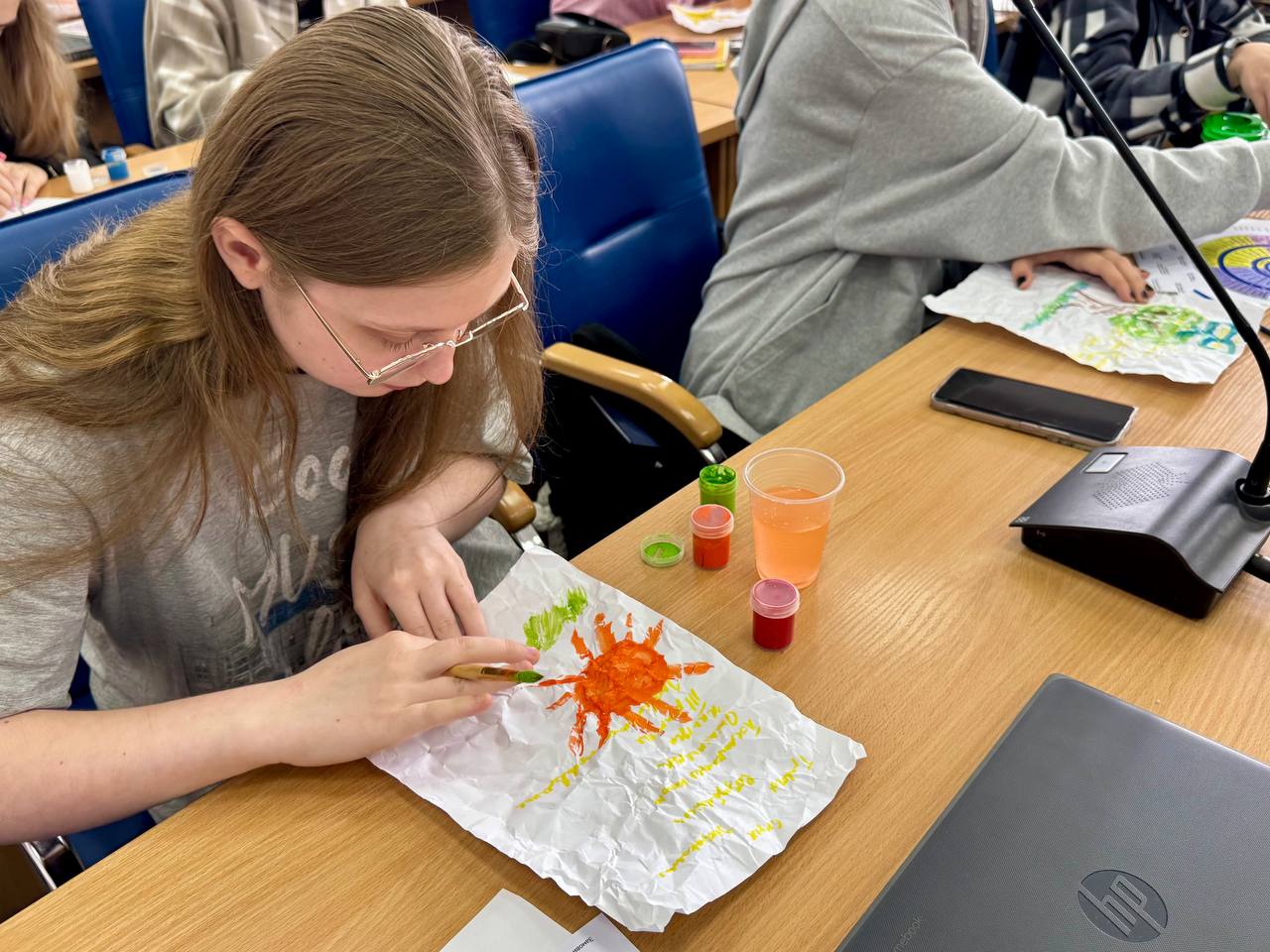
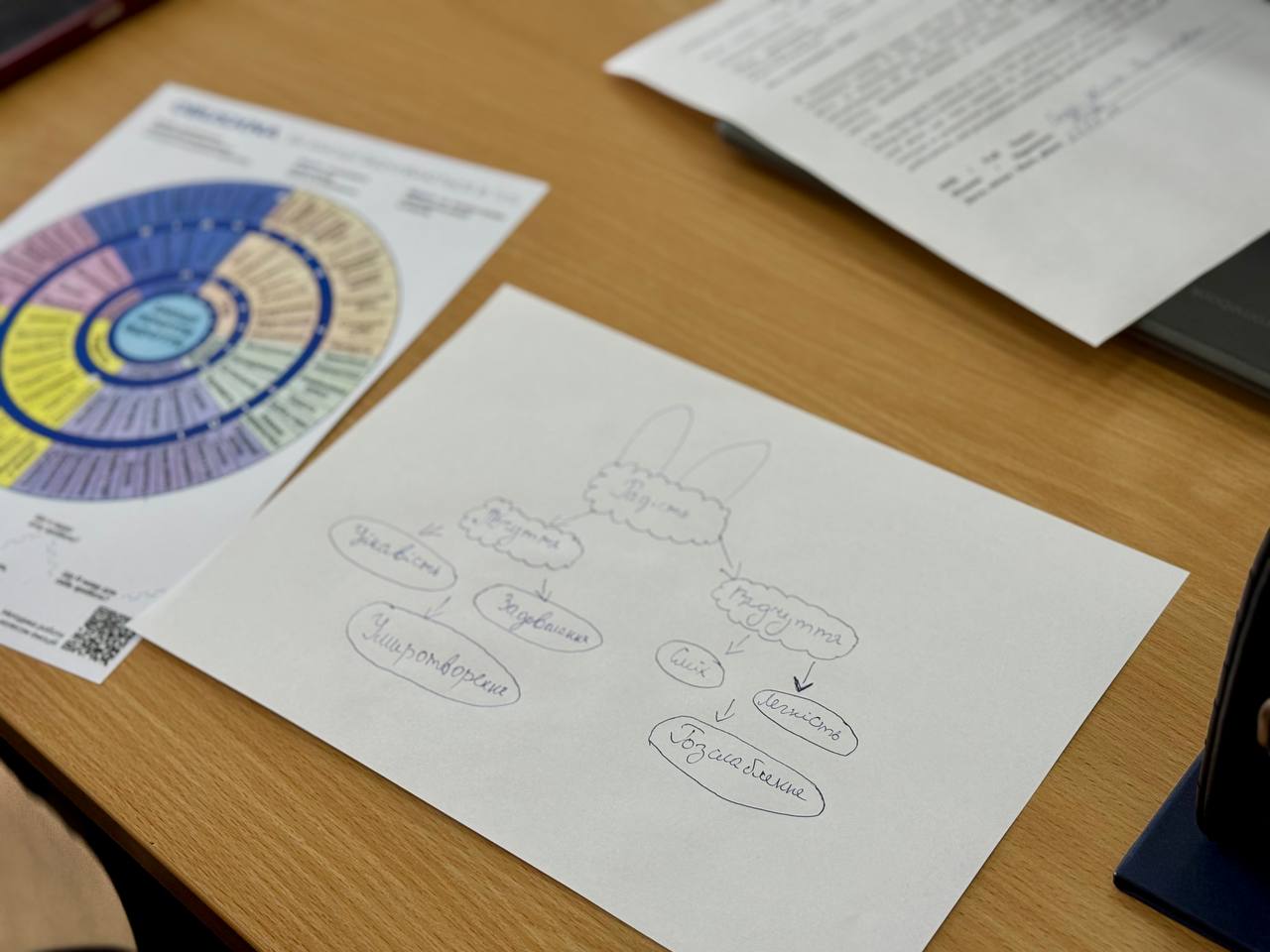
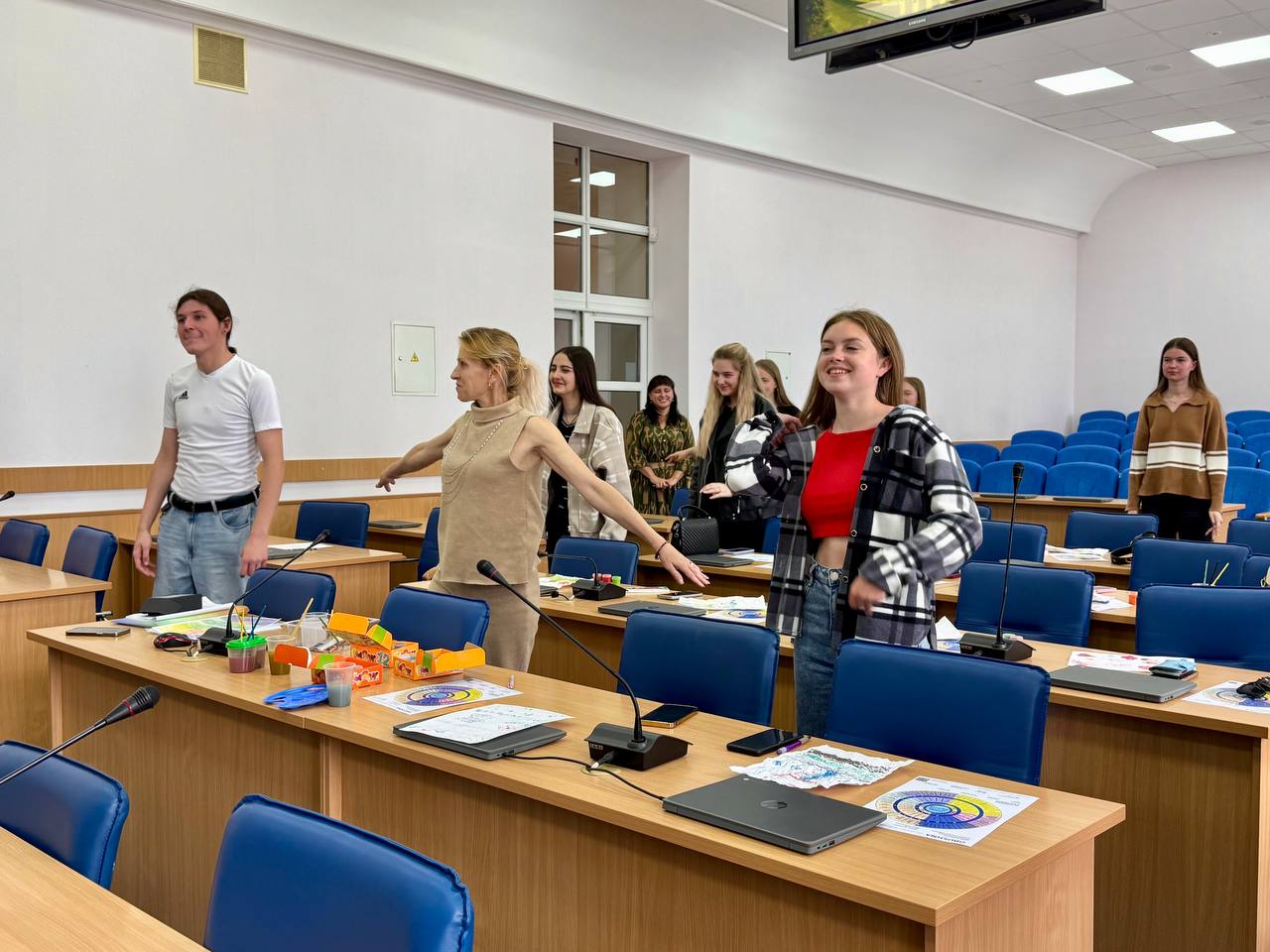
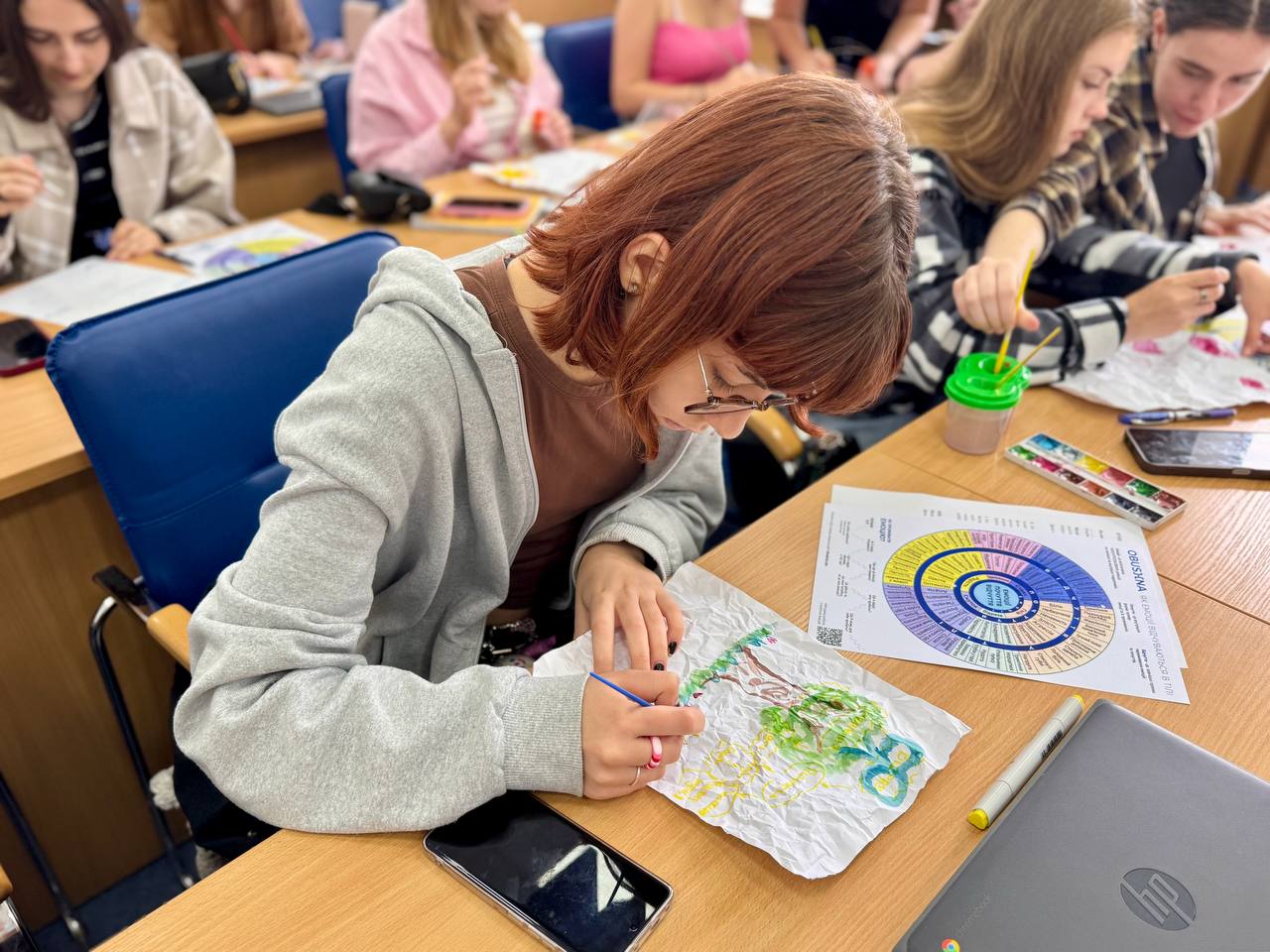

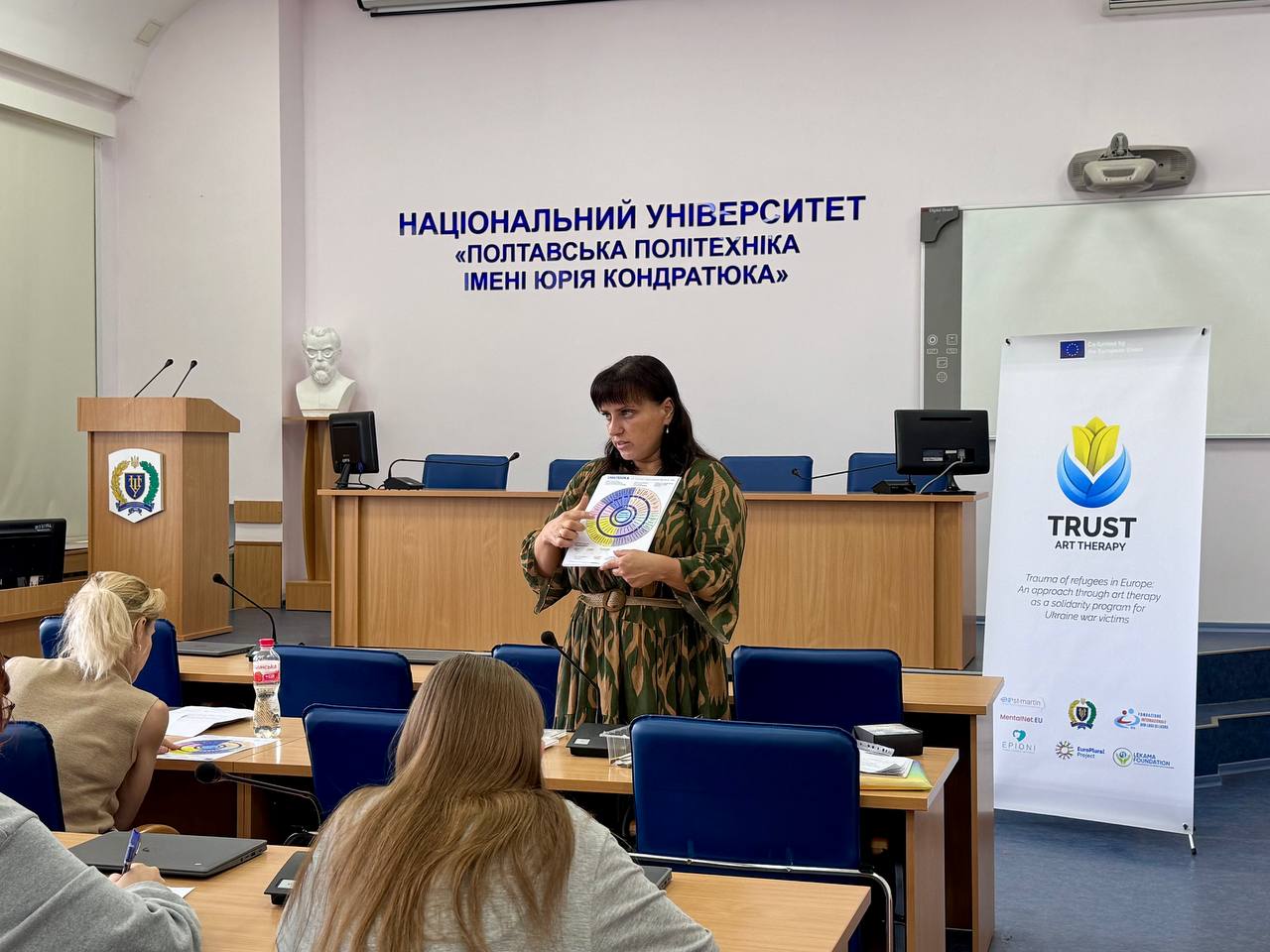
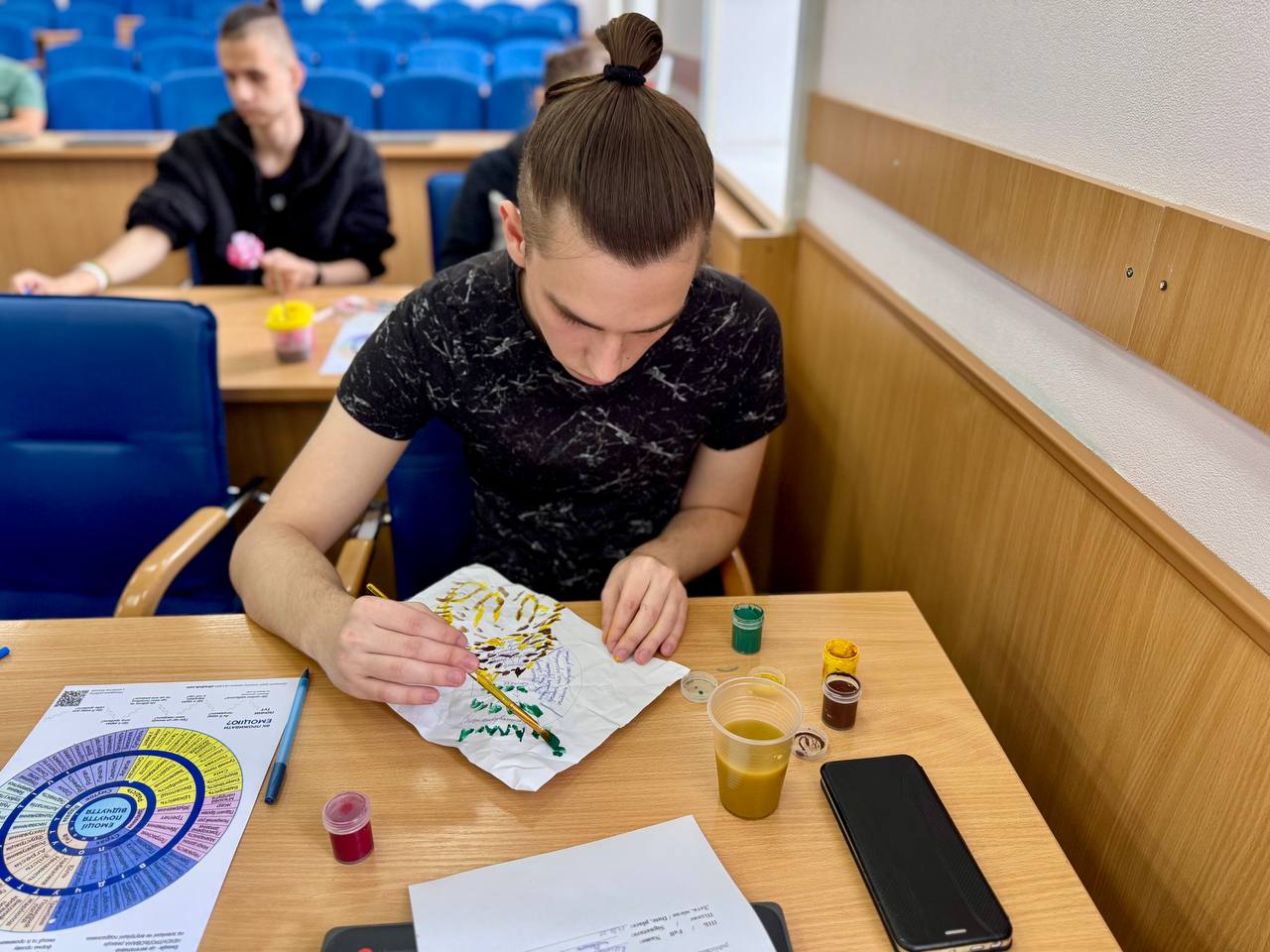

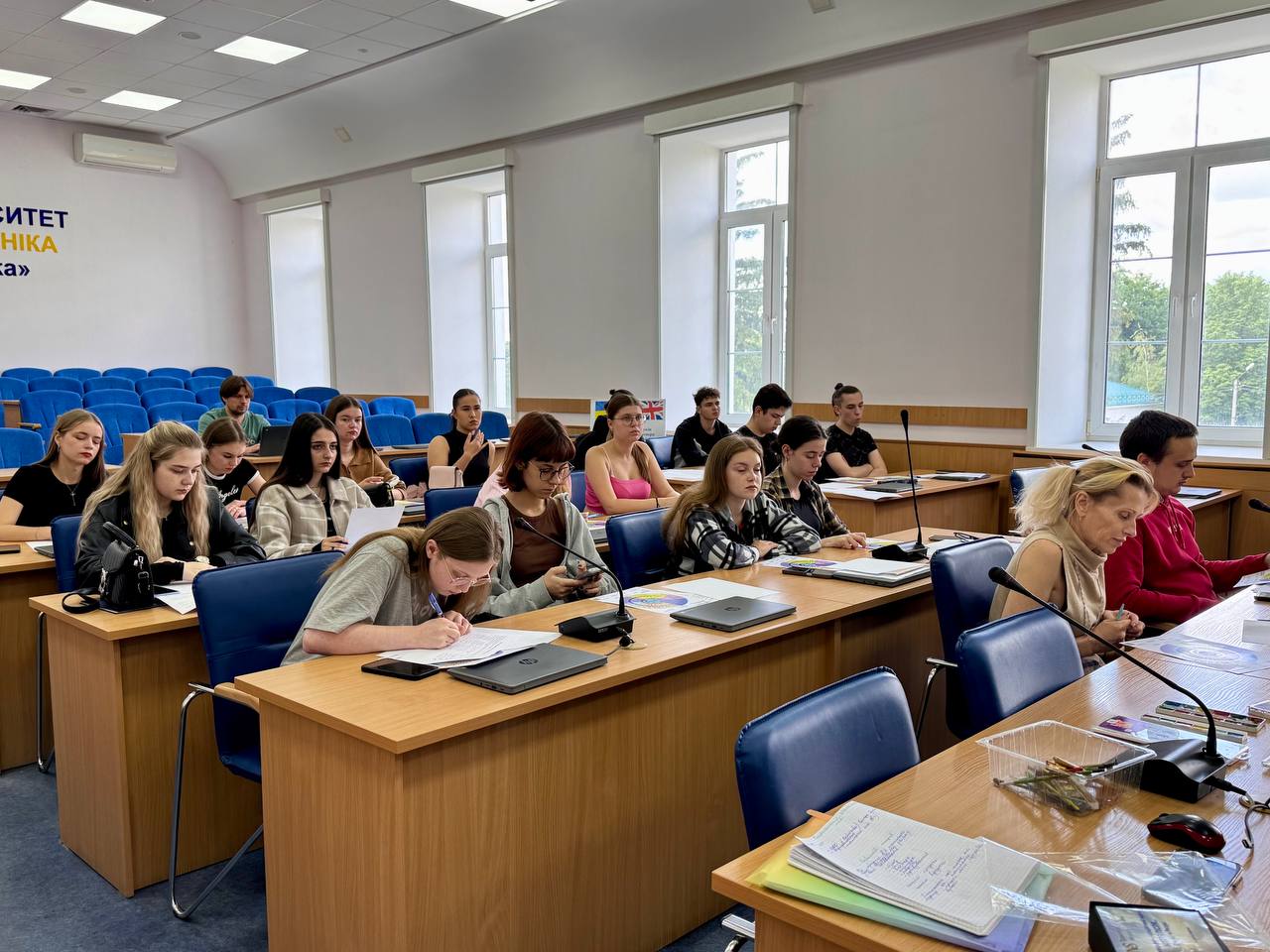
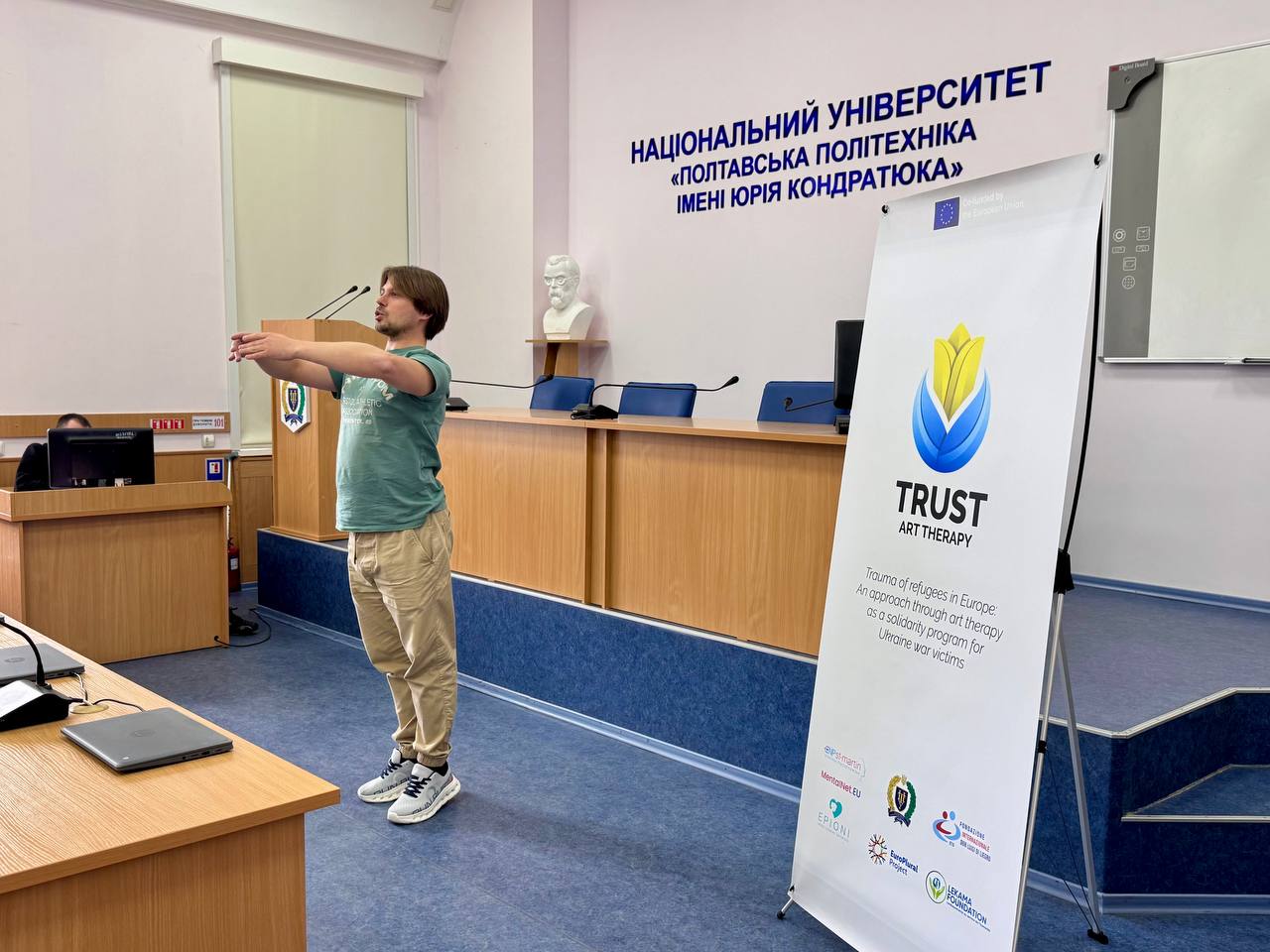
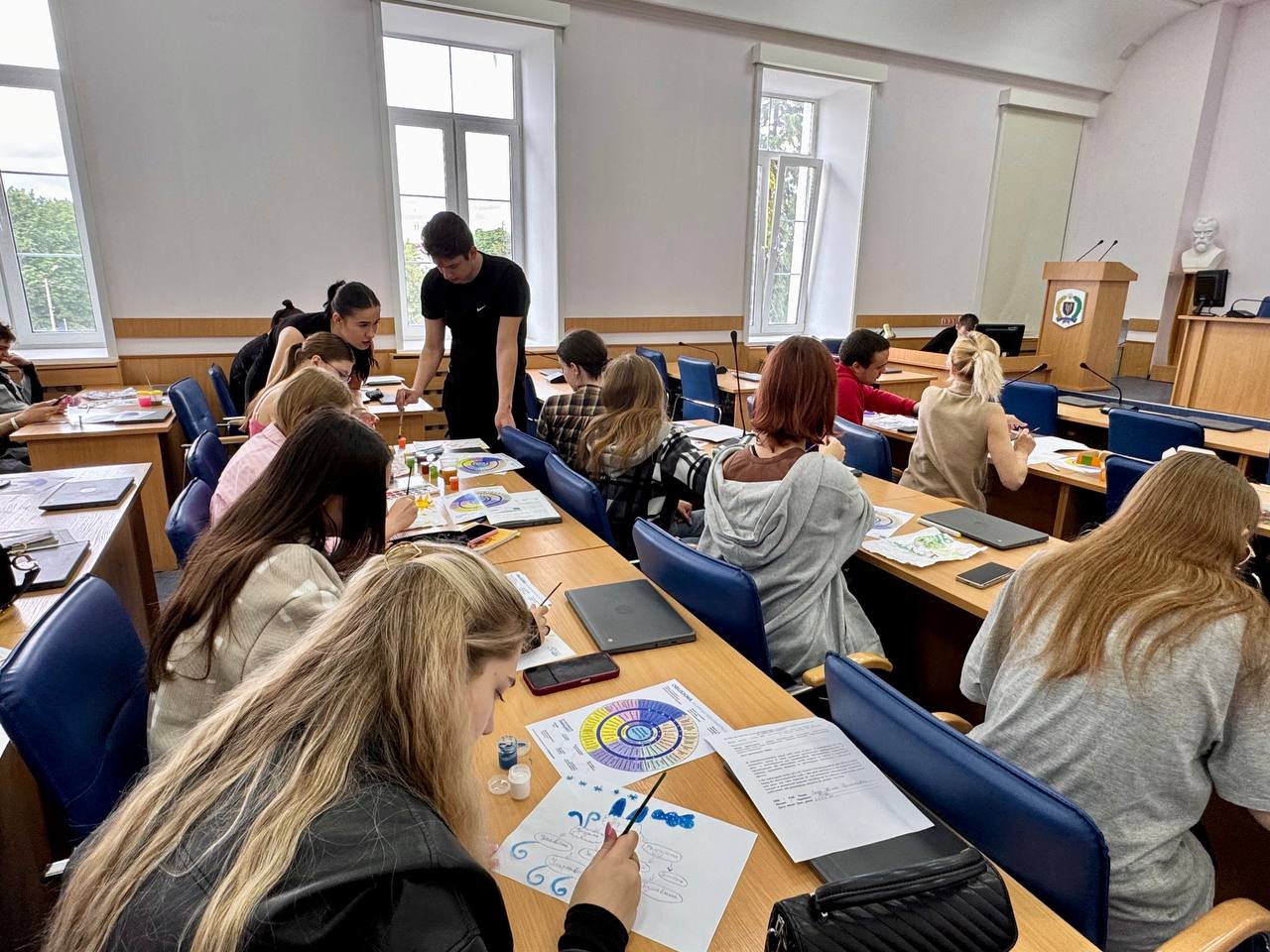
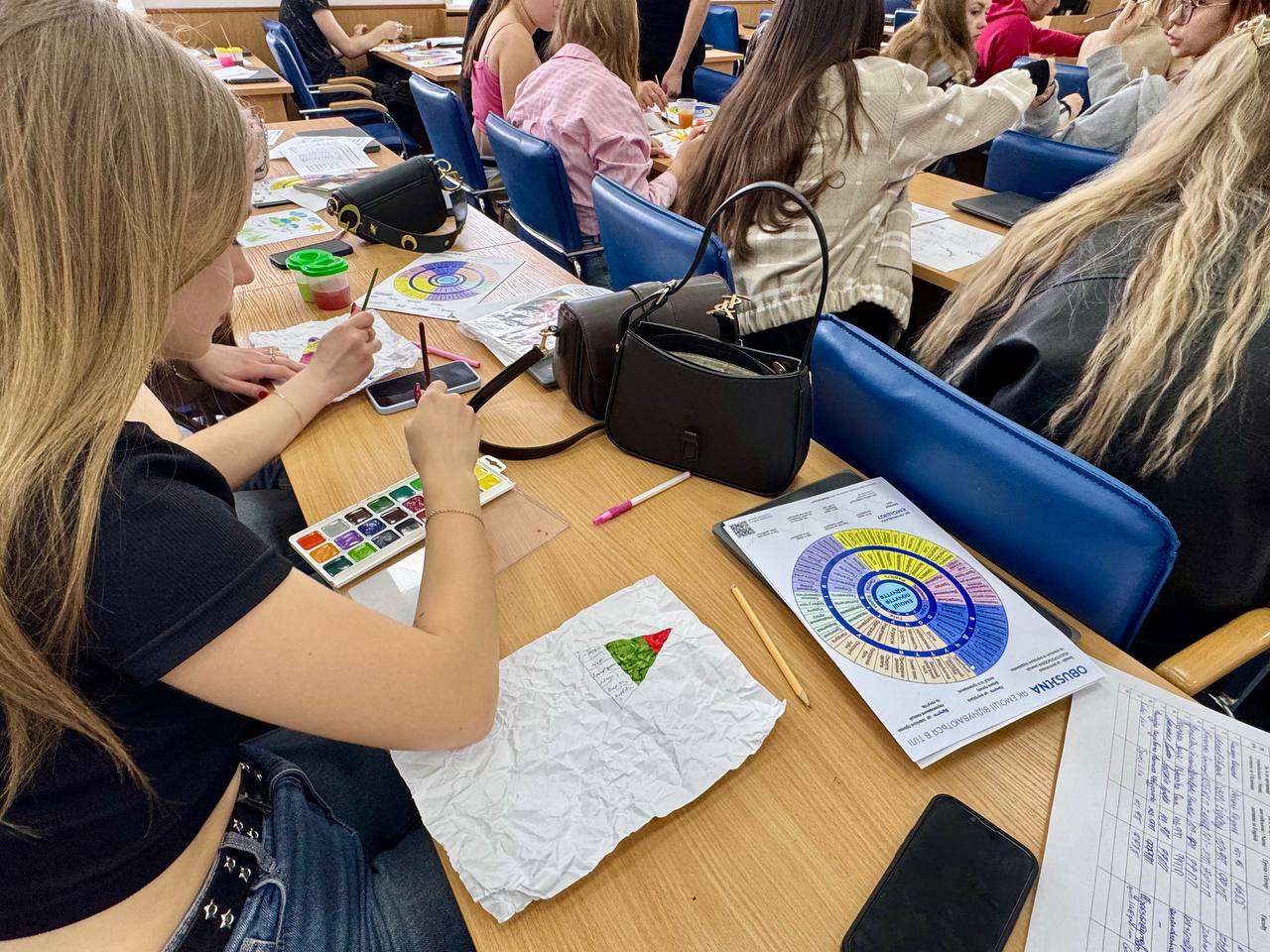

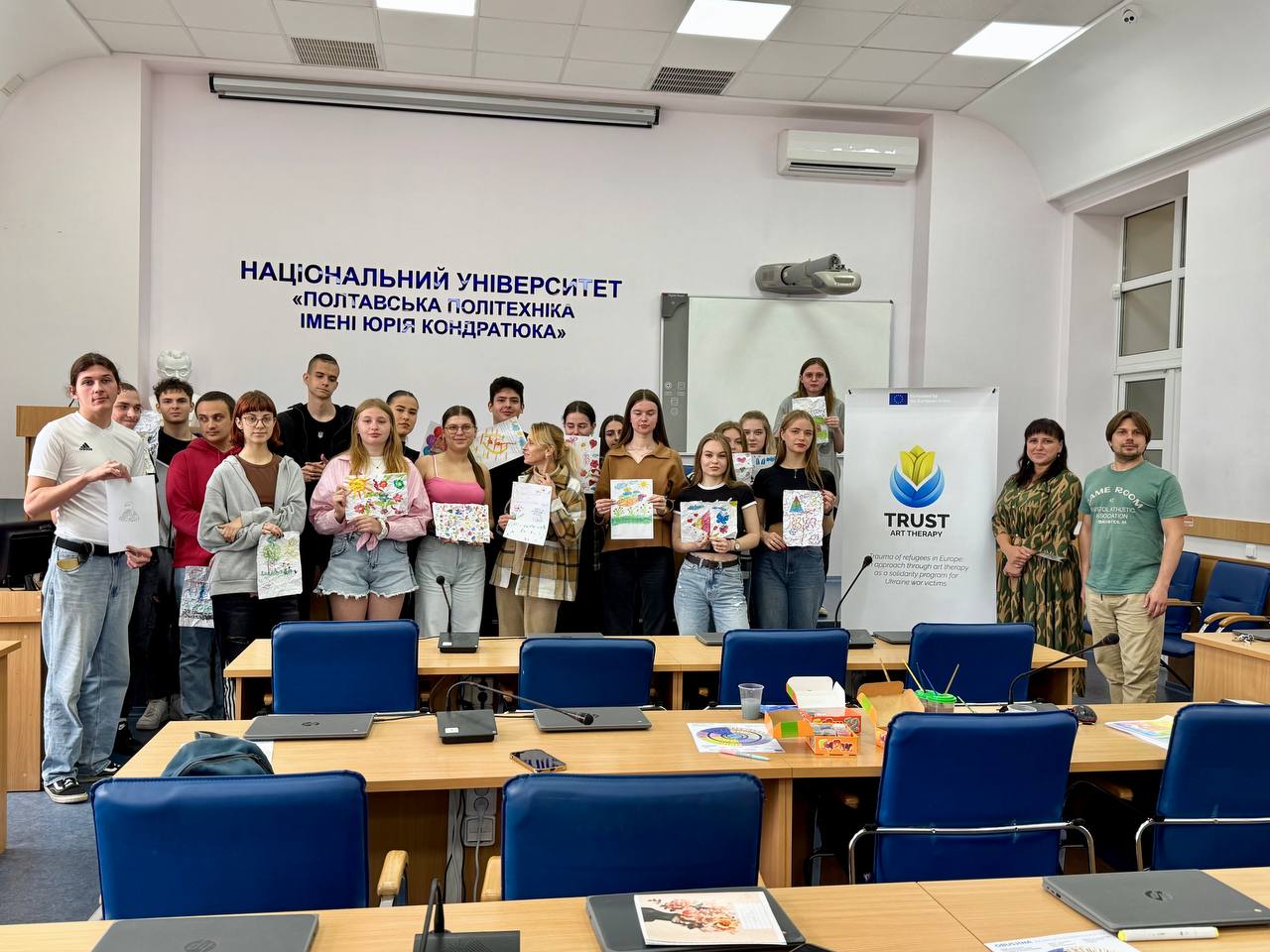
Poltava Polytechnic continues its cycle of art therapy activities that help young people not only restore psychological balance but also feel that even in the darkest of times, they are not alone. And that every emotion, when lived through attentively, can become a source of new strength.
The upcoming TRUST sessions promise even more practices, innovative techniques, and, most importantly, the care and support that Ukrainian youth urgently need today.
Within the TRUST project, several psychotherapeutic initiatives have already shown a positive impact on the mental well-being of participants, many of whom faced displacement, separation from loved ones, prolonged stress, and anxiety. Art therapy has helped reduce emotional tension, build safe channels for emotional expression, and restore the sense of connection with oneself and the world.
The previous sessions included symbolic activities such as designing personal coats of arms to represent inner values, sources of strength and hope; associative drawing exercises; the “Relationships” activity aimed at reflecting on personal connections with loved ones, community, and country; discussions around “What does mental health mean to me?”; neurographic drawing; and immersion in body-oriented therapy where movement, dance, and physical expression become key tools for emotional release and recovery, worked with metaphorical associative cards, practiced associative reflection of thoughts on paper and explored the symbolism of the elements of nature and their direct impact on the human psyche and emotional state, plunged into music and daram therapy and took part in a unique art therapy session on neurography titled “My Tree of Life”, worked with metaphorical cards and the Nossrat Pezeshkian psychotherapeutic model, сreated drawings depicting a personal “Tree of Power”, did the art therapy exercise “My superpower”, were given tools for deeper self-understanding by transforming pain into art, and art into a path to healing; helped children recognise and understand their emotions, learn self-soothing techniques, and restore their emotional resilience, helped adult IDPs gain a deep understanding of their emotions, release internal tension, and harmonise their psycho-emotional state.
Media Centre of
National University “Yuri Kondratyuk Poltava Polytechnic”



